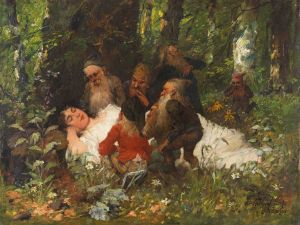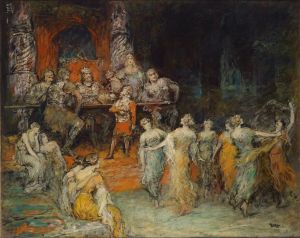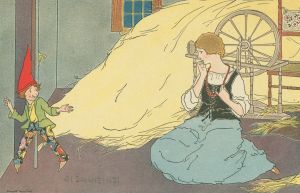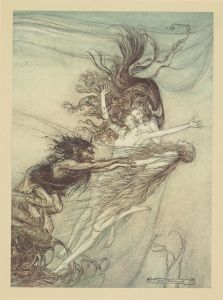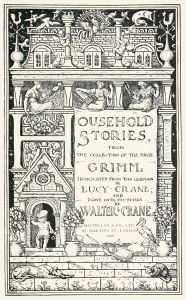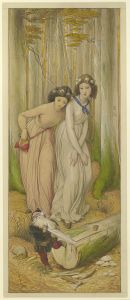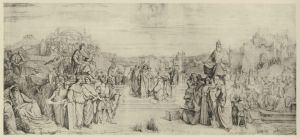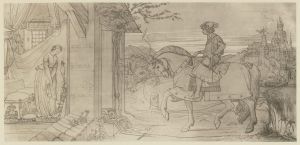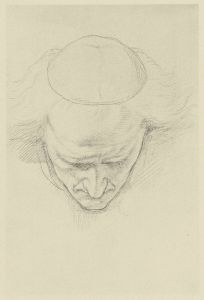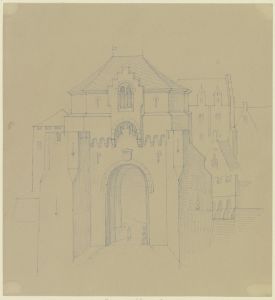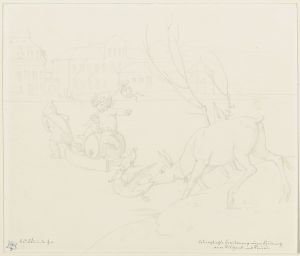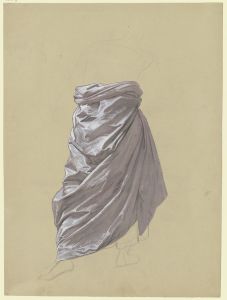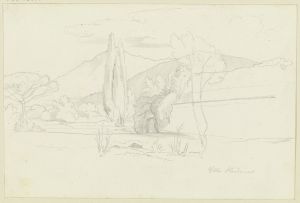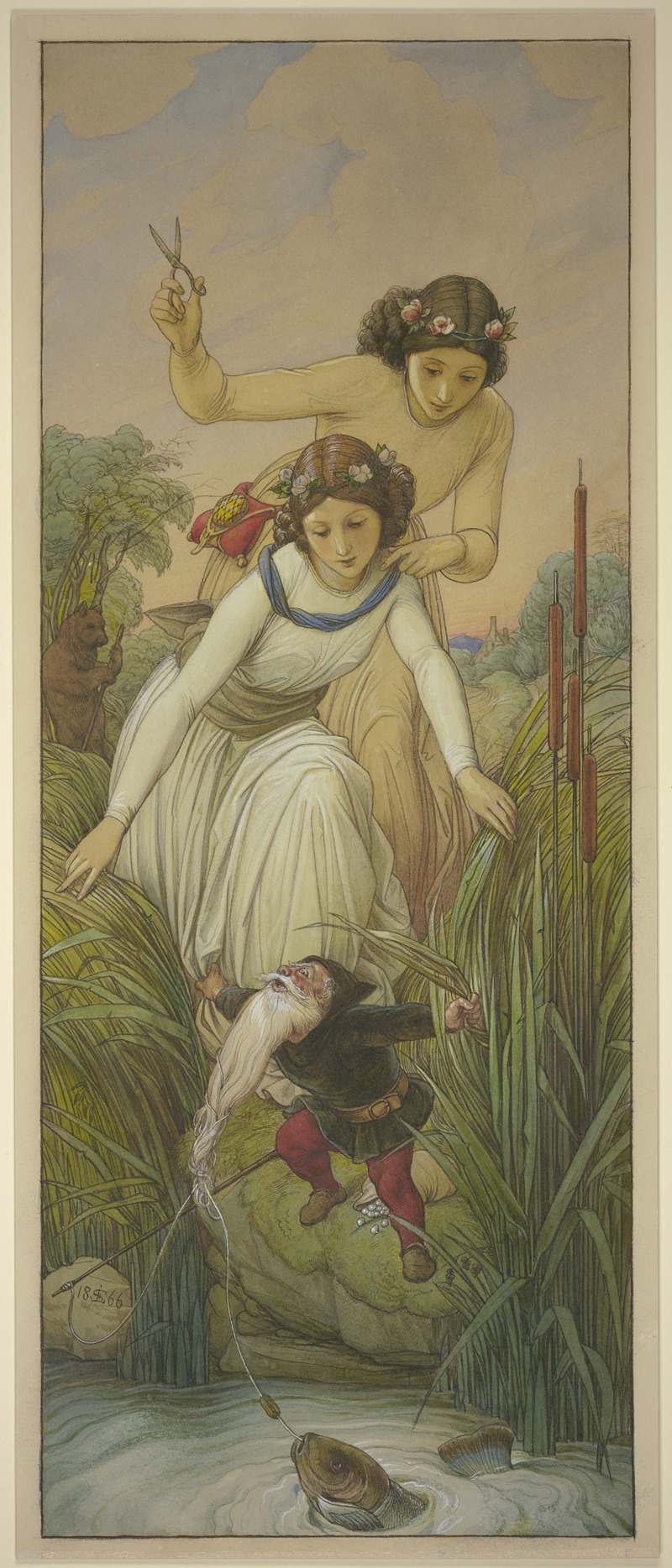
Schneeweißchen und Rosenrot finden den Zwerg, dessen Bart sich in der Angelschnur verheddert hat
A hand-painted replica of Eduard von Steinle’s masterpiece Schneeweißchen und Rosenrot finden den Zwerg, dessen Bart sich in der Angelschnur verheddert hat, meticulously crafted by professional artists to capture the true essence of the original. Each piece is created with museum-quality canvas and rare mineral pigments, carefully painted by experienced artists with delicate brushstrokes and rich, layered colors to perfectly recreate the texture of the original artwork. Unlike machine-printed reproductions, this hand-painted version brings the painting to life, infused with the artist’s emotions and skill in every stroke. Whether for personal collection or home decoration, it instantly elevates the artistic atmosphere of any space.
Eduard von Steinle's painting "Schneeweißchen und Rosenrot finden den Zwerg, dessen Bart sich in der Angelschnur verheddert hat" is a notable work that draws inspiration from the German fairy tale "Snow-White and Rose-Red" (Schneeweißchen und Rosenrot), which was popularized by the Brothers Grimm. Steinle, a prominent 19th-century Austrian painter, was known for his contributions to the Nazarene movement, which sought to revive honesty and spirituality in Christian art.
The painting depicts a scene from the fairy tale where the two sisters, Snow-White and Rose-Red, encounter a dwarf whose beard has become entangled in a fishing line. This moment is a pivotal part of the story, highlighting themes of kindness and the contrast between good and evil. The sisters, known for their gentle and compassionate nature, help the dwarf despite his ungrateful and rude demeanor. This act of kindness is a recurring motif in the tale, emphasizing the virtues of charity and benevolence.
Steinle's work is characterized by its detailed and expressive portrayal of the characters and the natural setting. The painting captures the essence of the fairy tale through its vivid depiction of the sisters and the dwarf, set against a lush, forested background. Steinle's use of color and light adds depth and emotion to the scene, drawing viewers into the narrative.
Eduard von Steinle was born in Vienna in 1810 and became a significant figure in the Nazarene movement, which originated in the early 19th century. The Nazarenes were a group of young German-speaking artists who aimed to return to the spiritual and artistic values of the Renaissance and Middle Ages. They sought to create art that was sincere and infused with religious and moral themes. Steinle's work often reflected these ideals, and he became known for his religious and historical paintings.
Throughout his career, Steinle was associated with several important artistic projects, including the frescoes in the Städel Museum in Frankfurt and the Speyer Cathedral. His work was highly regarded for its narrative quality and attention to detail, which are evident in "Schneeweißchen und Rosenrot finden den Zwerg, dessen Bart sich in der Angelschnur verheddert hat."
The painting not only illustrates a beloved fairy tale but also serves as an example of Steinle's commitment to the principles of the Nazarene movement. It reflects his ability to convey complex themes through accessible and engaging imagery, making it a valuable piece of 19th-century art. Steinle's contribution to art history is marked by his dedication to reviving the spiritual and moral dimensions of art, and this painting is a testament to his skill and vision.
In summary, Eduard von Steinle's painting is a significant work that captures the essence of a classic fairy tale while embodying the artistic and spiritual values of the Nazarene movement. Through his detailed and expressive style, Steinle brings to life the story of Snow-White and Rose-Red, offering viewers a glimpse into the moral and narrative richness of this timeless tale.





